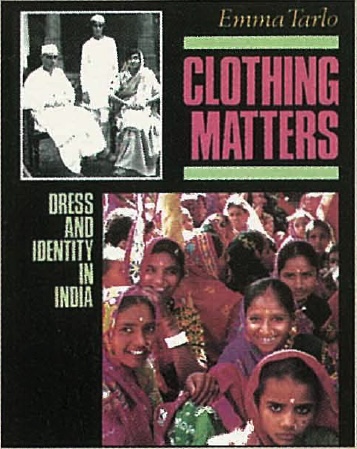DOES YOUR DRESS REALLY MATTER?
By Tara Katir, Kauai
We all know the adage, “You are what you eat.” But are we also what we wear? Dr. Emma Tarlo documents modern and aged clothing conundrums and the changing dress codes of Indian society in Clothing Matters, Dress and Identity in India (382 pages, Chicago University Press, us$23.95). Pursuing a doctorate in anthropology at the University of London, Tarlo followed India’s developing clothing mores from Vedic times, with an emphasis on the colonial period to today.
Tarlo began her field work in 1988 by studying the significance of the embroidery tradition of a Gujarati village. Selecting a multi-caste village in Saurashtra, an area renowned for its stitchery, Tarlo quickly discovered that her own interest was prodigiously more keen than the women weavers themselves, who were largely uninspired. Some had given up wearing traditional clothing altogether and others, embarrassed by its backward connotations, seemed eager to dispense with the garments in favor of more modern wear. As Tarlo points out, “There was something slightly farcical about the anthropologist trying to uncover the vital significance of a textile tradition that the villagers themselves were keen to put behind them.”
Thus began a study into the attitudes behind the clothes and controversies smoldering in the community about them, including issues of women’s modesty and caste modernization. Just how far can one move away from the established traditional clothing and be accepted by society?
Coming full circle, traditional clothing, Tarlo discovered, has become the fashion for not only a certain segment of Indian society, but for Westerners as well. Dressing convincingly as Gujarati or Rajasthani peasants, with only their make-up betraying urban roots, ethnic chic has become a fashion statement.
The irony has not been lost on the village peoples. While beholding a glittery fashion show in the town of Hauz Khas, the headman opines, “Previously people were looking down on us because we were wearing dhotis and looking like farmers. But now they actually come to the village and dress in our old clothes.” It may seem that the more things change, the more they stay the same.
The University of Chicago Press, 5801 South Ellis Avenue, Chicago, Illinois 60637, USA


